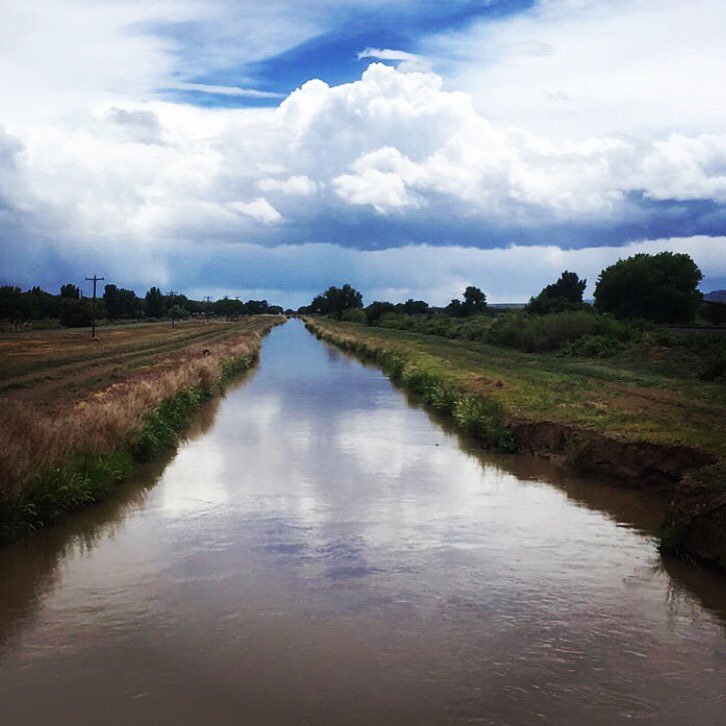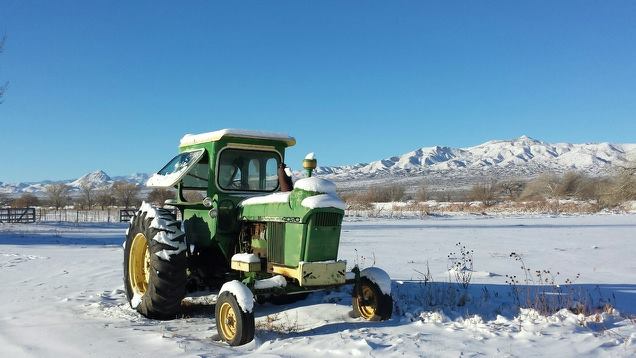
Intermountain West Joint Ventures (IWJV) Water 4 Initiative
The middle Rio Grande in New Mexico was designated as a focus area for the IWJV Water 4 Initiative, which is comprised of agency partners, corporate interests, and private landowners focused on building public and private partnerships to protect migratory bird habitat in 11 intermountain west states in the Central Flyway. The IWJV has recognized RGALT as lead partner in the Water 4 Initiative due to our private land conservation accomplishments and our twenty-three years of experience working to develop longstanding relationships with agricultural landowners as well as our efforts to raise awareness of the role private working lands play in landscape conservation and ecosystem resiliency. Recently, RGALT helped launch the Water 4 Initiative by hosting a tour of our private conservation easement projects in Socorro County for conservation stakeholders. A portion of the day was set aside to allow agricultural landowners to tell their stories and to express their concerns and needs to remain economically viable. Stakeholders gained a better understanding of the challenges landowners face to sustain their agriculture operations, the role RGALT plays in helping landowners accomplish their conservation goals, and the role private lands play in ecosystem resilience.
Bernalillo County Conservation Easement Program (BCCEP)
The Bernalillo County Conservation Easement Program is a new collaborative project between RGALT, the Land Trust Alliance, the Trust for Public Land and Bernalillo County. In 2014, Bernalillo County voters’ approved the Open Space Mill Levy. The Levey will provide approximately $1.3 million annually for land and water conservation efforts in the county. In response to voter support, the county developed the Parks, Recreation and Open Space Facilities Master Plan (PROS Plan) and then worked with the Trust for Public Land to develop a Bernalillo County Greenprint to identify priority conservation lands in the county. With the Greenprint as a guide, RGALT is partnering with Bernalillo County to further develop a Conservation Easement program and reach landowners who may be interested in conserving a portion of their land. RGALT is leveraging additional conservation funds and public/private partnerships to expand the ability of the county and landowners to protect agricultural land, natural habitat and wildlife corridors, open space, and degraded ecosystems in the rural areas of the county. RGALT is also working with Bernalillo County to protect open space areas within the urban community of Albuquerque. This effort will provide opportunities for wildlife habitat at the urban-rural interface, urban agriculture through community gardens and urban farms, improved stormwater quality, and opportunities for urban residents to experience open spaces, wildlife, and access to locally grown foods. The urban component of this project will strive to reach vulnerable communities that suffer from disproportionate socioeconomic stressors.


Middle Rio Grande Conservancy District
The MRGV Private Lands Protection Initiative protects privately owned irrigated agricultural lands, wildlife and natural habitat, and the water rights associated with those lands. Protection of these privately-owned areas protects the local food shed, open spaces, wildlife corridors, wildlife refuges, and food resources for wildlife, and also preserves the historic, cultural integrity of central New Mexico’s communities.The MRGV Private Lands Protection Initiative uses a community-based conservation approach to protect agricultural lands, open spaces, wildlife habitat, and the Rio Grande corridor. RGALT works with private landowners and public and private partners to protect private lands in perpetuity using conservation easements. Procuring conservation easements, however, is only the first step in enhancing the conservation values particular to each property. We work collaboratively with our partners to restore and enhance these important conservation lands. We use a team approach to conservation work, developing partnerships and effective collaborations with state and federal agencies, private landowners and individuals, other non-profits, and tribes. RGALT’s conservation partners include the U.S. Fish and Wildlife Service’s Bosque del Apache, Sevilleta, and Valle del Oro National Wildlife Refuges, Save Our Bosque Task Force, New Mexico Game and Fish, U.S. Department of Agriculture’s Natural Resources Conservation Service, NM Department of Agriculture, Ducks Unlimited, New Mexico Energy and Minerals Department, Intermountain West Joint Ventures Group, National Fish and Wildlife Federation, Rio Grande Return, Native American tribes, private landowners, private individuals, foundations, and other non-profits. Collectively, these efforts build community resiliency and health for people, wildlife, and the environment.


RGALT’s Rio Grande Corridor New Mexico (RGCNM) program protects, restores, and enhances privately owned agricultural and riparian lands, and federal, state and tribal lands including critical wetland habitat located in National Wildlife Refuges and state waterfowl management areas. This program is supported by funding from the North American Wetlands Conservation Act (NAWCA) standard grants program. RGALT obtained three $1 million grants from NAWCA in 2005, 2012 and 2014 and is waiting on a response for the 2017 grant cycle. RGALT’s success in this program area is due to support from 51 public and private partners who have garnered over $7 million in matching contributions to protect over 5,000 acres of critical wetland habitat in the Rio Grande riparian corridor. In 2012, RGALT and partners secured $500,000 to purchase land for the Valle del Oro urban Refuge located in Albuquerque, New Mexico.
RGALT garnered a two-year $80,000 grant from the National Fish and Wildlife Foundation (NFWF) to launch the Middle Rio Grande Southwestern Willow Flycatcher Habitat Program. RGALT collaborated with Rio Grande Return, another 501(c)(3) non-profit working in the Middle Rio Grand Valley, to conduct landowner outreach, secure conservation easements, and engage private landowners in conservation efforts to improve and create habitat for the endangered Southwest Willow Flycatcher. This project also supports landscape scale efforts to protect the riparian ecosystem of the Middle Rio Grande, and also provides support for the Natural Resource Conservation Service’s Working Lands for Wildlife program.

